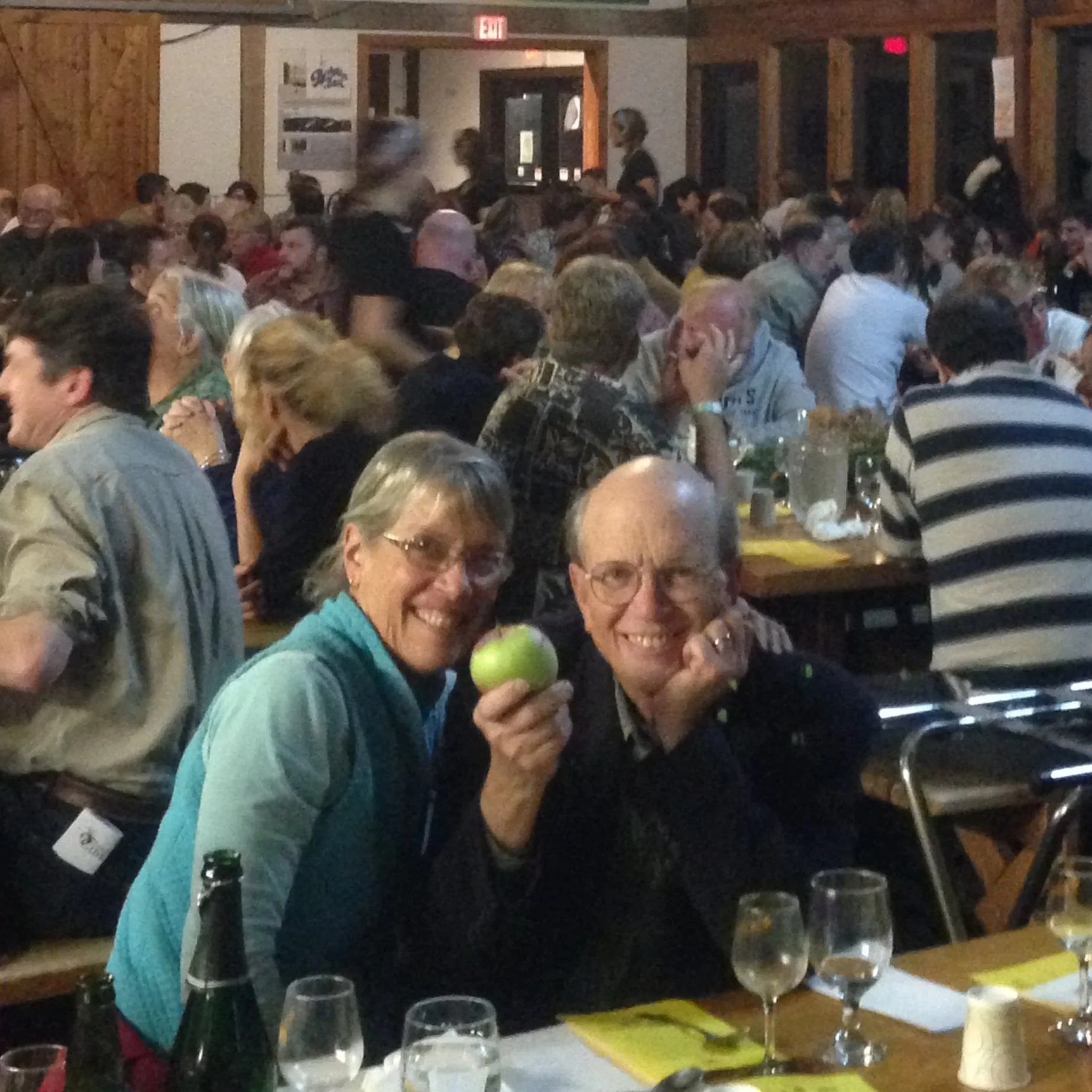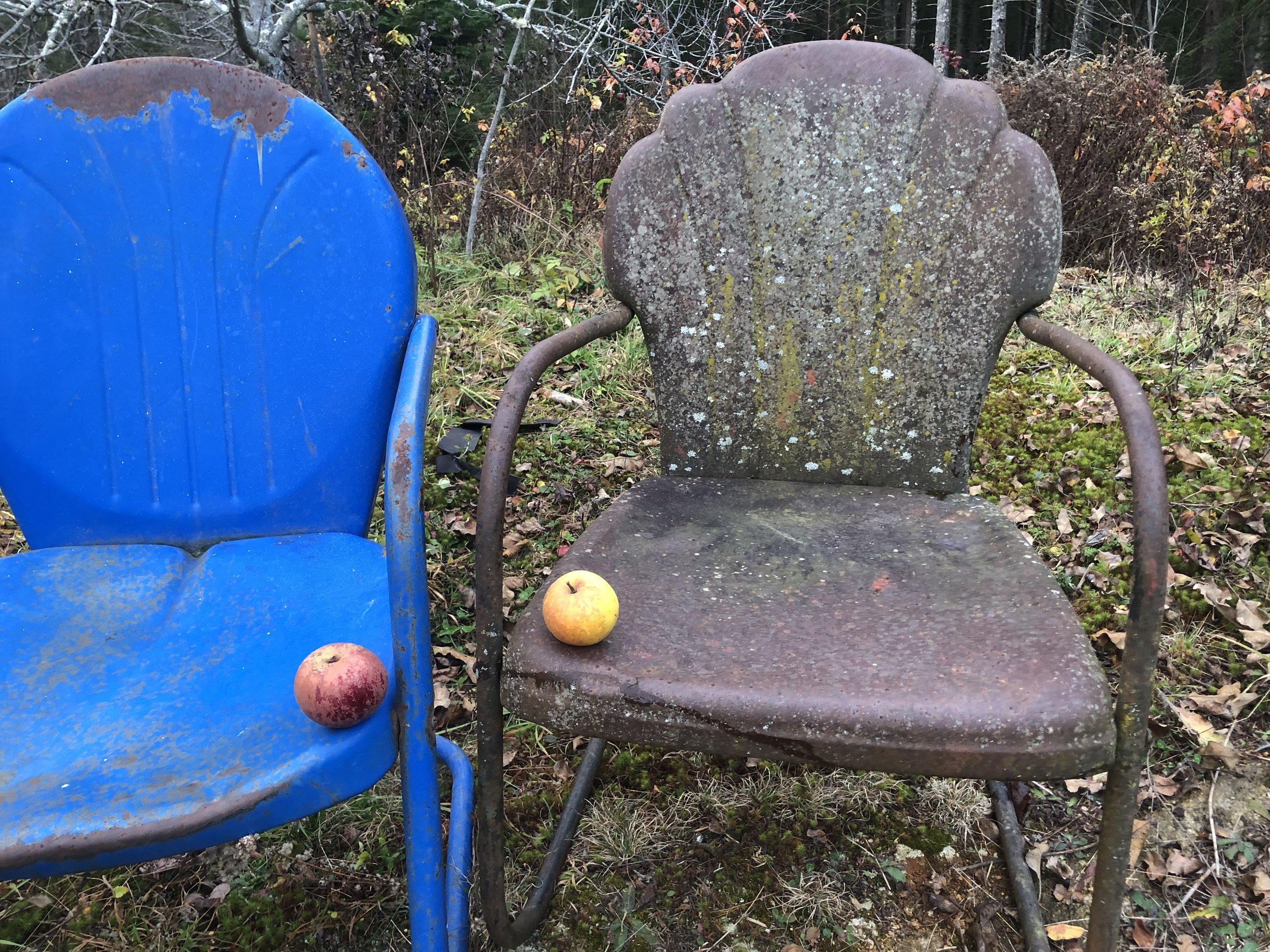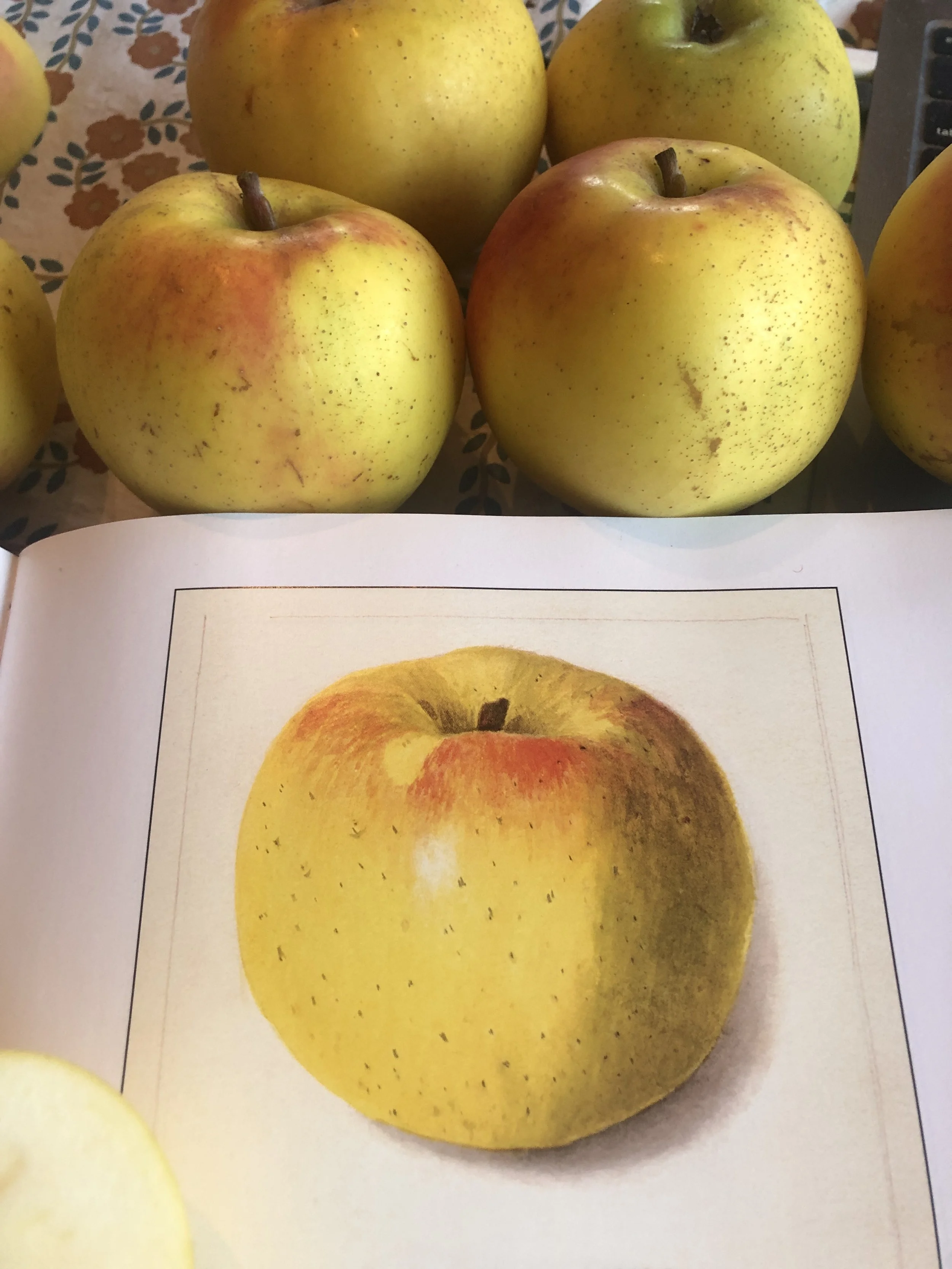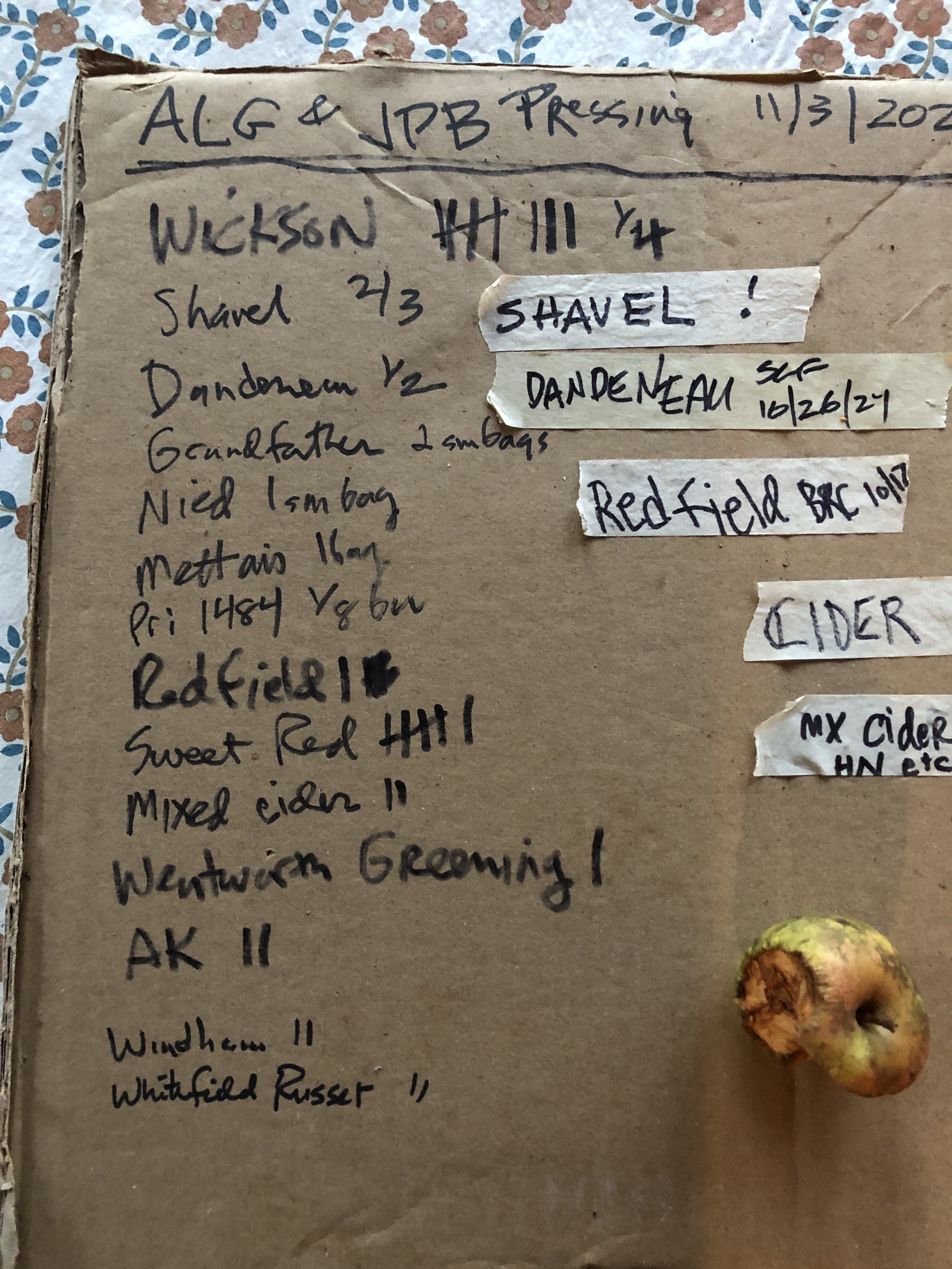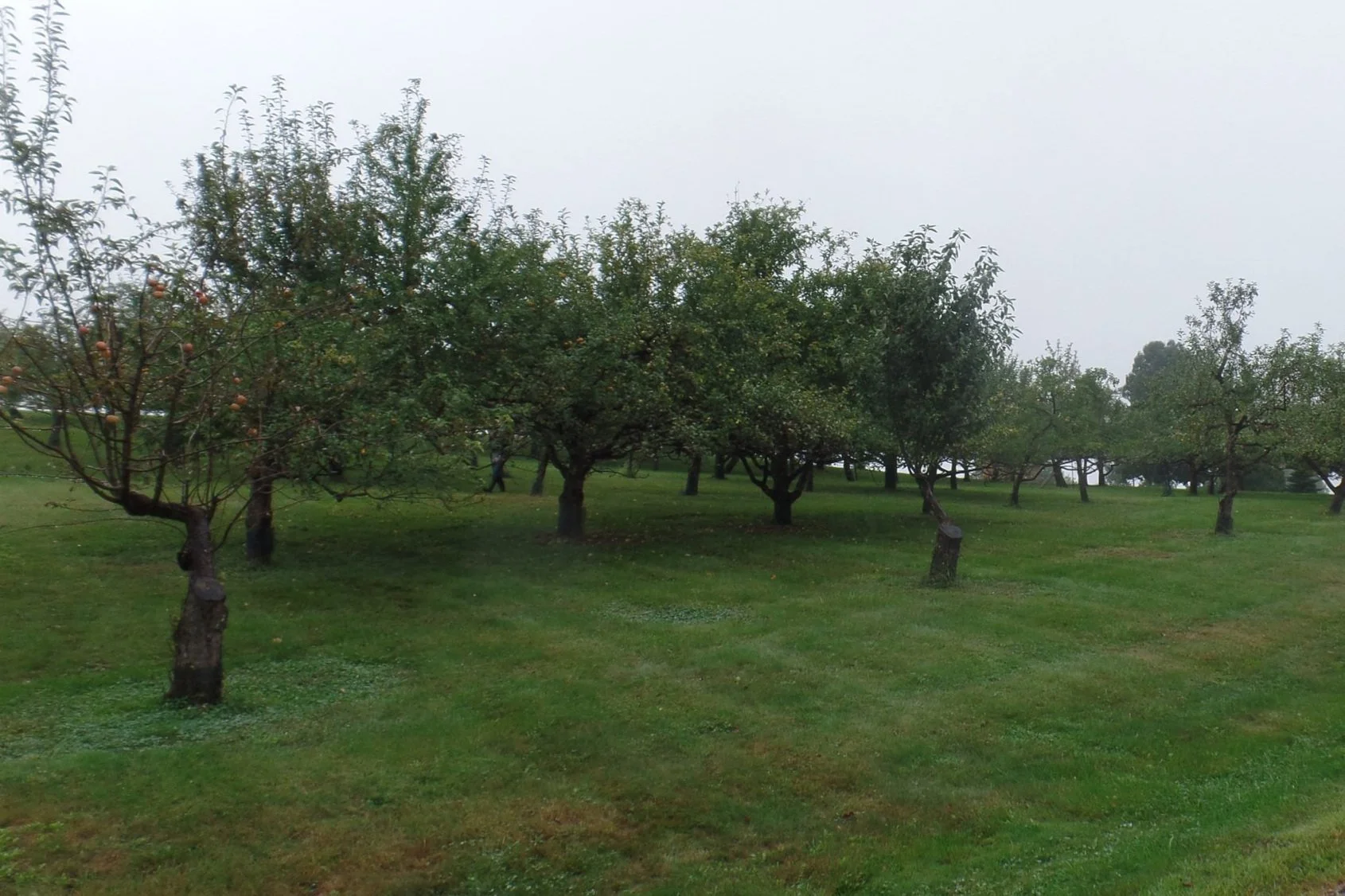TODAY IN THE ORCHARD
Today was my last class at Colby College. For the past month I’ve taught eighteen students how to phenotypically describe, evaluate, and identify apples. Each of them researched, phenotyped, photographed and created a report on one of eighteen of the new patented/trademarked cultivars including at least several I’d never heard of (Envy, Kanzi, Lady Alice). We did have to fudge a bit due to lack of apples. (I couldn’t find any Jazz.) So we included Gala, Frostbite (MN 447) and Redfield.
During the class we did three tastings. In the first two Frostbite was the undisputed winner. In the third tasting (which didn’t include Frostbite) Northern Spy won, Ashmead’s Kernal was runner-up, Honeycrisp was third and Milo Gibson and Golden Russet tied for fourth. If you don’t know Milo Gibson, check it out. It is a first-rate dessert fruit, late ripening and often has a licorice flavor.
Yesterday the class visited a very neglected apple tree next to Colby’s Rugby field. It does not appear to have been pruned since Colby was a farm, not a college. That would be about 1950. The tree is nearly dead, but I did spot a few live twigs. I will collect scionwood, graft and send a few leaves to Cameron. So ends my professorial career!
Bunk’s apple class, next to the Rugby field January 29, 2025








